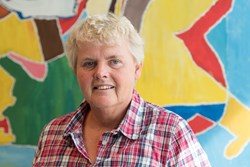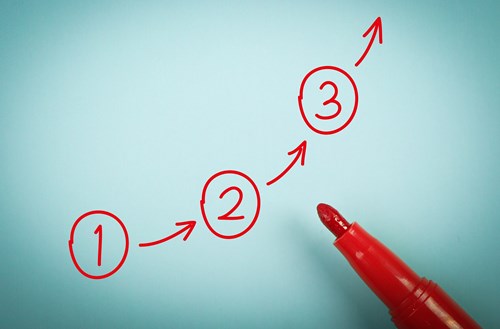The Internet is also indispensable for insurers. Consumers orientate themselves online on insurance via comparison websites and search specifically for information. In addition, application procedures are online and customers submit claims via insurers' websites or apps. Customer contact is also increasingly via chatbots or Whatsapp. Like any consumer, people with functional limitations want to make use of these facilities. It is therefore of great importance that insurers are easily accessible digitally.
What is digital accessibility?
Every human being has the right to participate in society. For example, you must also be able to enter a building with a wheelchair and the Netherlands is working the accessibility of public transport for people with disabilities.
It's the same for digital facilities! In our society you can no longer do without the internet and computers. And many people don't want to miss that either. That's why digital accessibility is important:
- Blind and visually impaired people often find it difficult to find their way within websites.
- Multimedia applications such as animated films are difficult for the deaf and hard of hearing to follow without subtitles.
- People who are color blind have difficulty with sites with few color contrasts.
- People who do not have such a steady hand can hardly navigate with the mouse.
If your website is well put together, everyone can use it. Also visitors with a disability. It concerns millions of people in the Netherlands! An accessible website is therefore not only pleasant for the consumer, but also a great advantage for companies that offer information, services and products.
Technology helps if you follow the standards
Technology helps people with disabilities to use the internet:
- Blind people, for example, work with screen readers, which read aloud what is on the screen.
- There are also braille displays that display the information in braille.
- Magnification software can enlarge text and images up to 32 times the original size.
- Speech recognition is also well advanced.
- Word processing is possible without touching the keyboard. Some browsers are fully voice-controlled.
So a lot can be done, but the website must be set up for these technologies. That is why standards have been drawn up that help make websites accessible.
The digital accessibility standard contains agreements and requirements for the way websites are designed, built and managed. These requirements are based on research and practical experiences of people with disabilities. If you follow these requirements, then you know that the website can be used by all visitors.
Legislation
You are probably already convinced of the usefulness and necessity of an accessible website. But it is good to know that your commitment is not without obligation: there are several laws in force that oblige companies to offer easily accessible websites.
UN Convention and WGBH
In 2016, the Netherlands ratified the UN Convention on the Rights of Persons with Disabilities . The Equal Treatment on grounds of Disability or Chronic Illness Act (WGBH/CZ) has been amended to the Convention. The aim of the Convention and the Equal Treatment Act is an equal participation of people with disabilities in society, in order to achieve a society in which everyone can participate.
The Convention applies to all types of disabilities that can limit people's participation in society: physical, psychological and intellectual disabilities. The Convention and the Act cover many areas of interest to people with disabilities, including services such as insurance.
European Accessibility Act
The European Accessibility Act was adopted in June 2019. This law obliges companies to make their websites, software and apps as accessible as possible. This way, everyone can use these services and everyone has the same access to information. Even if, for example, you are visually impaired or blind, deaf or hard of hearing, have a motor disability or suffer from a neurological disorder.
The new European legislation is in line with the UN Convention on the Rights of People with Disabilities. The new legislation applies, among other things, to banking and e-commerce, such as offering insurance online.
The legislator states that organizations must offer their products and services accessible. If they fail to do so, they must take it off the market. Or - in the case of a website or mobile application - take it offline. The law will come into force in June 2022. Organisations will then have until June 2025 to comply with this new European legislation.
View the UN Convention Unlimited Participation programme here!
Support for the insurance industry
The Dutch Association of Insurers helps its members to improve digital accessibility in the insurance industry:
Industry Monitor
The Covenant, in the summer of 2018 have insurers' websites investigated to find out to what extent insurers' websites are accessible. In In 2021 , this research has been repeated, to see if progress is being made. In the 2021 study, we see that a number of insurers have made adjustments, but that overall the accessibility is not yet in order. We use the results of these studies to further support our members on their way to digital accessibility.
Training offer
Firm Ground is a training and consulting firm that supports organizations in the entire process of digital accessibility. Together with them, the Association offers a package of training courses for insurers. These are:
- Create accessible PDF documents from Word
- Accessible design and corporate identity
- Accessibility for UX/UI designers - technical
Read more about the content and dates.
Practical experiences for inspiration
Everyone wants to participate in society, but many consumers experience barriers. In a series of interviews, people with different backgrounds and disabilities help insurers with the (digital) accessibility of their products and services. Be inspired by their experiences below.
Practical experiences

Part 1 - Saskia
"Ask what someone needs," Saskia replies when asked what accessibility means to her. Due to, among other things, an anxiety disorder, she functions slightly differently than others. Personal attention and structured information is essential for her. Read the full interview

Part 2 - Conny
"My dream is that everything will be accessible to everyone." But this dream of Conny, born with a slight intellectual disability, has not yet come true. There is still work to be done. Conny is director of the LFB and would like to talk to insurers. "We can help test websites." Read the full interview

Part 3 - Bart
An intestinal disease and chronic fatigue have turned Bart's life upside down. He developed depression and anxiety and personality disorders that caused him to interpret information differently. "Sometimes I really don't understand the information on websites. That's why I prefer direct contact with an employee." Read the full interview

Part 4 - Mieneke
"Because I am not completely deaf from birth, I have a good command of Dutch and I can manage myself well in daily life. But people who are deaf all their lives often have a language delay. Mieneke, chairman of the Woord en Gebaar foundation, therefore argues for understandable language and an accessible chat function for the deaf and hard of hearing. Read the full interview
And now let's get started yourself
There are useful online tools. This allows you to make a good start to improve the accessibility of your website. And also try to operate your website yourself without using the mouse! You can navigate with the tab and arrow keys, select with the spacebar and click with enter.
Please note: only about 30 percent of all accessibility issues can be detected automatically. If you want to know for sure how your website is doing, then more extensive research is needed.
Posters (create awareness within your organization)
- Accessible design
- Designing for users with autism spectrum disorder
- Designing for the deaf or hard of hearing
- Designing for users with dyslexia
- Design for users with reduced vision
- Designing for users with physical or motor disabilities
- Designing for screen reader users
Non-technical free tools
- Accessibility Quick Check (Adobe)
- Accessibility Checker (Microsoft)
- Colour Contrast Analyser (CCA)
- Minimum automatic accessibility test
- Plugin to simulate browser restrictions (mouse use, visually impaired, color blind)
Technical free tools
Speech software
- Apple computers come standard with voice: VoiceOver.
- In Windows, voice software can be installed for free via NV Access
Useful links
Want to know more? Take a look at these websites:
- www.digitoegankelijk.nl | Handy website with a lot of information from the government, an accessibility statement and a step-by-step plan accessible website.
- www.accessibilty.nl/over-toegankelijkheid | Background and in-depth and practical information.
- www.drempelvrij.nl | Information about the Dutch quality mark 'drempelvrij.nl' for accessible websites. Organisations can have their website tested by an inspection body that has been qualified by this foundation. It also contains an overview of websites that bear the hallmark.
- www.telmeemettaal.nl | Information about low literacy.
- www.mkbtoegankelijk.nl | All information from VNO-NCW / MKB NL about all kinds of aspects of accessibility.
- www.oogvereniging.nl | General information and practical tips from the perspective of people with a visual impairment (search for: digital accessibility).
- www.3w.org | International website with a lot of (specialist) information about the WCAG guidelines.
- goedekennis.dedicon.nl | 10 tips for accessible information.
Or view the NOS item about accessibility websites healthcare institutions.

